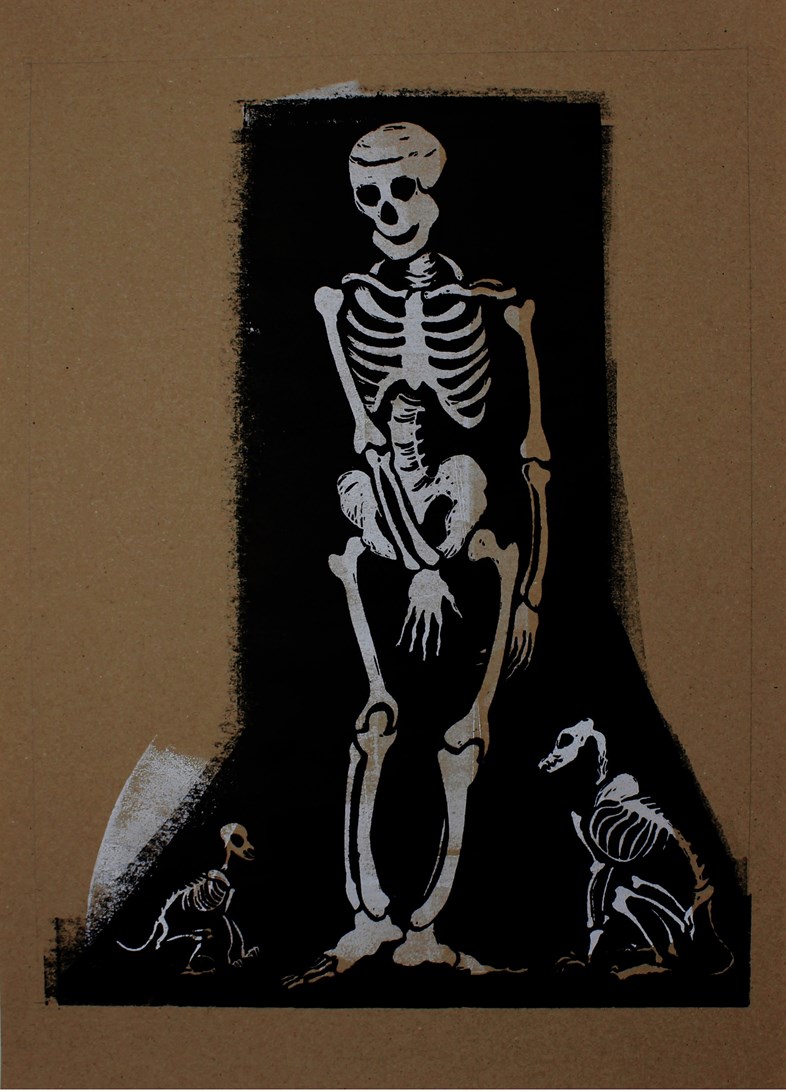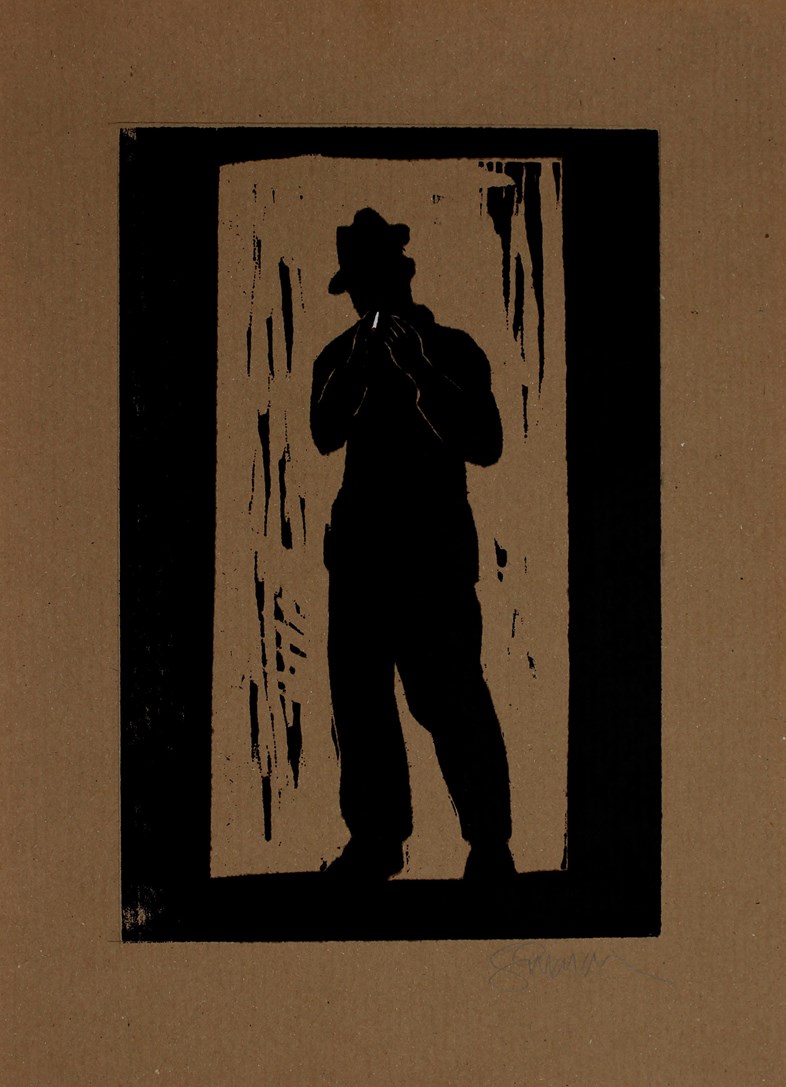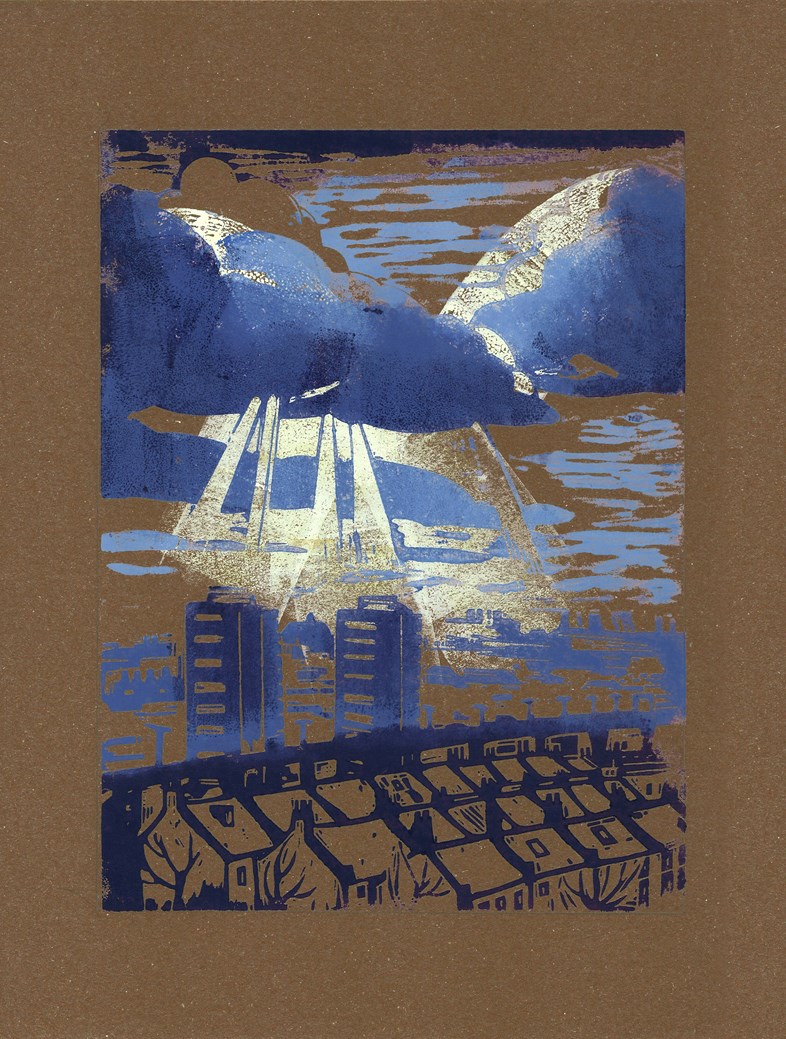From punk rock to painting: Dean Mayo Davies visits the musician-turned-artist at his west London studio
- TextDean Mayo Davies
“I come here every day. Whether I start work straight away… usually I have a cup of tea first, and a biscuit to fuel me up. And work til it gets dark.”
It’s a Friday morning in Paul Simonon’s west London studio, hidden away in a quiet mews still sympathetic to the city geography that has coloured much of his life: from the Westway to the world. It’s pure fable that Simonon, the celebrated bassist and art director of The Clash, is a musician-turned-painter however. He studied at Byam Shaw School of Art in Kensington. It was music that spectacularly stole him: untrained, he conjured those reggae and ska influenced basslines on the job.
Aside from a paint-splattered Abstract Expressionist tribute dressing the band – “I instigated the Jackson Pollock look for our clothes, only recently I found out his first name was Paul” – it is the 20th-century realism of the American Ashcan School, with its depictions of working-class life, and the 1950s ‘Kitchen Sink’ school of British painters that characterise Simonon’s work.

Devoted to painting since returning from Los Angeles in the mid-80s, his catalogue of breakfast and newspaper still lives, brave city views and charismatic paraphernalia is paired with a passionate regard of the history of art.
“I’d like to have that pass that Lucien Freud had, so I could go into the National Gallery at midnight after it’s closed and look at all the pictures,” he says, touring through his own canvases in various states of completion.
When is a painting finished? “When I’ve run out of paint!” he cracks, citing a quote from the radio comedy Hancock’s Half Hour.

Simonon’s personal art collection includes Matthew Smith, beloved of Francis Bacon; Sophie de Stempel and John Minton. A red club chair belonging to Craigie Aitchison, used for the Scottish artist’s portraits, has pride of place in the studio. “Craigie liked his dogs. He’d be very happy to know that one of my mine is using it as his basket!”
I’m here to see Simonon’s linocuts, a technique he picked up recently. They sit somewhere between the purity of a line drawing and the laboured push-pull of committing oil to canvas until it relents ‘enough’. Comprising a view of West London, a motorcyclist, biker impedimenta, a self portrait and a skeleton, some hang on a line overhead, drying.
“You have a certain amount of control but sometimes they come out as a bit of a surprise when printed, which keeps it interesting,” he explains. “The physical carving out is a pleasure – the tools cut like butter through the Japanese wood I use, you can even do very arabesque shapes if you want. I’m exploring possibilities and it’s prompting ideas for the future.”

Unlike the often managerial role of a modern conceptual artist, Simonon works entirely without an assistant: it is part of his ethos that he completes every step of the process himself. He works continually on several pieces at once, in great artist tradition. It’s about still having the hunger of an apprentice after over 40 years of painting, the aim being to sail one’s talent as close to divine as can be.
“When I’m here, I’m battling with myself, really,” he reveals. “Painting is a solo moment of exploration – you can’t sit around waiting for inspiration. The only way it works is if you put in the time. Things start moving in your head. You can go through highs and lows of eagerness, but if you stay with it, things start coming through.”
A selection of Paul Simonon’s linocuts are available through his website.











